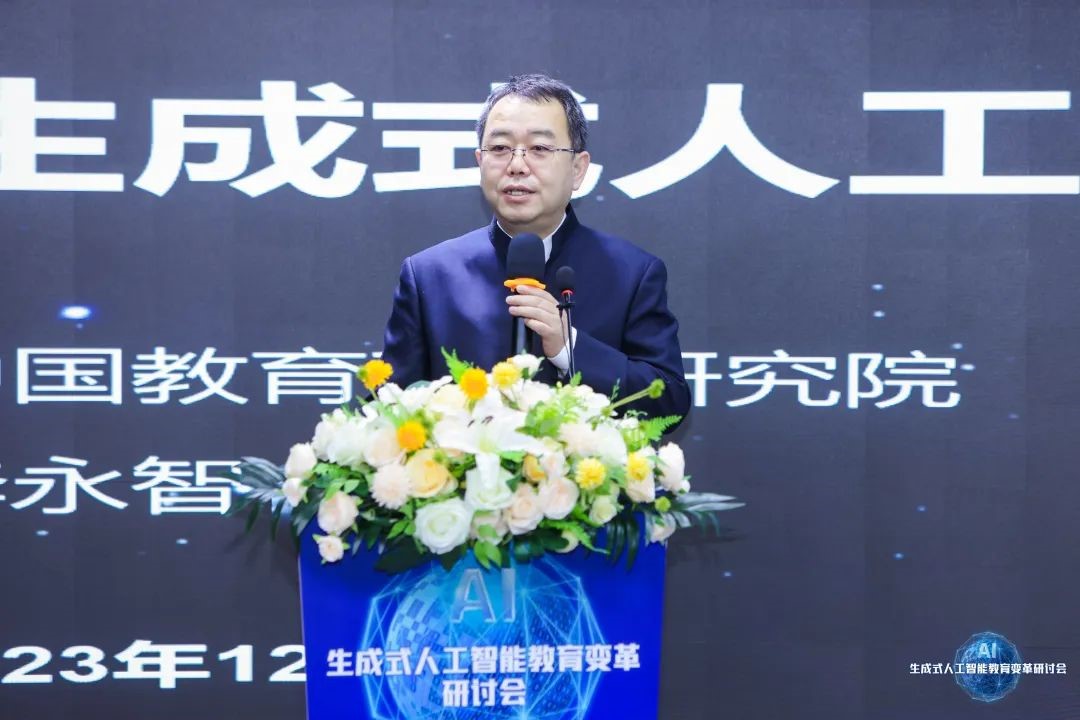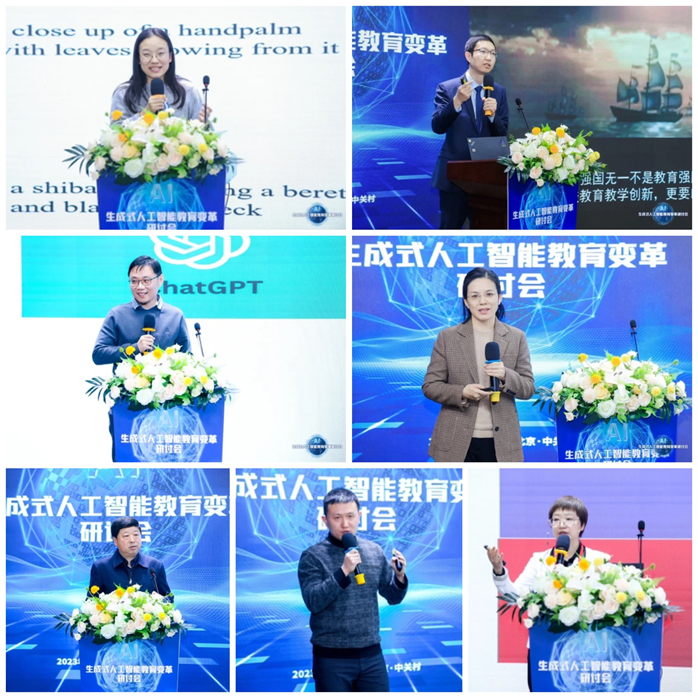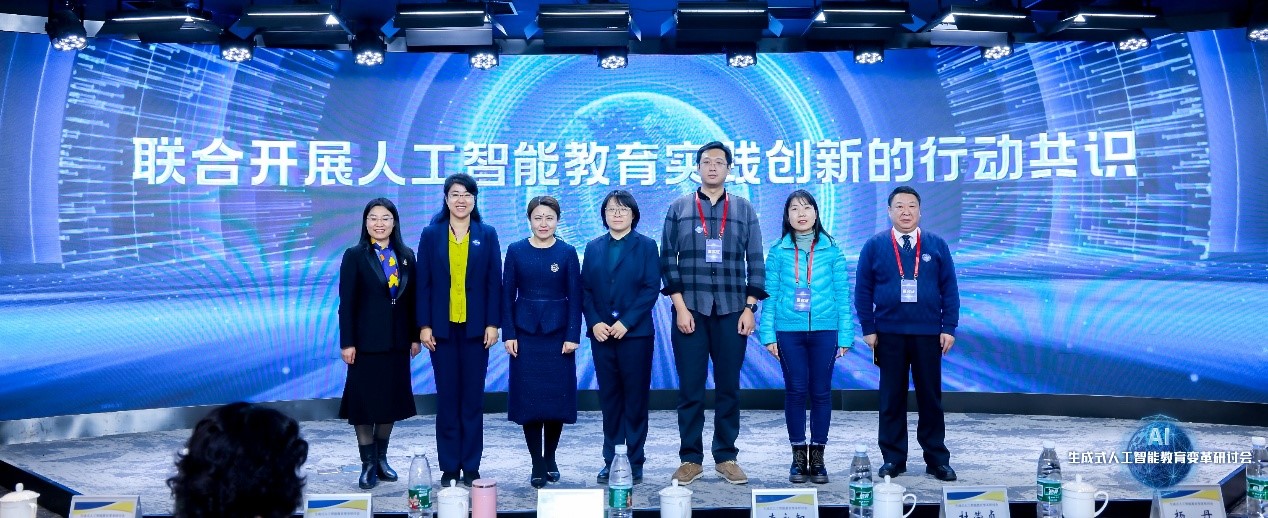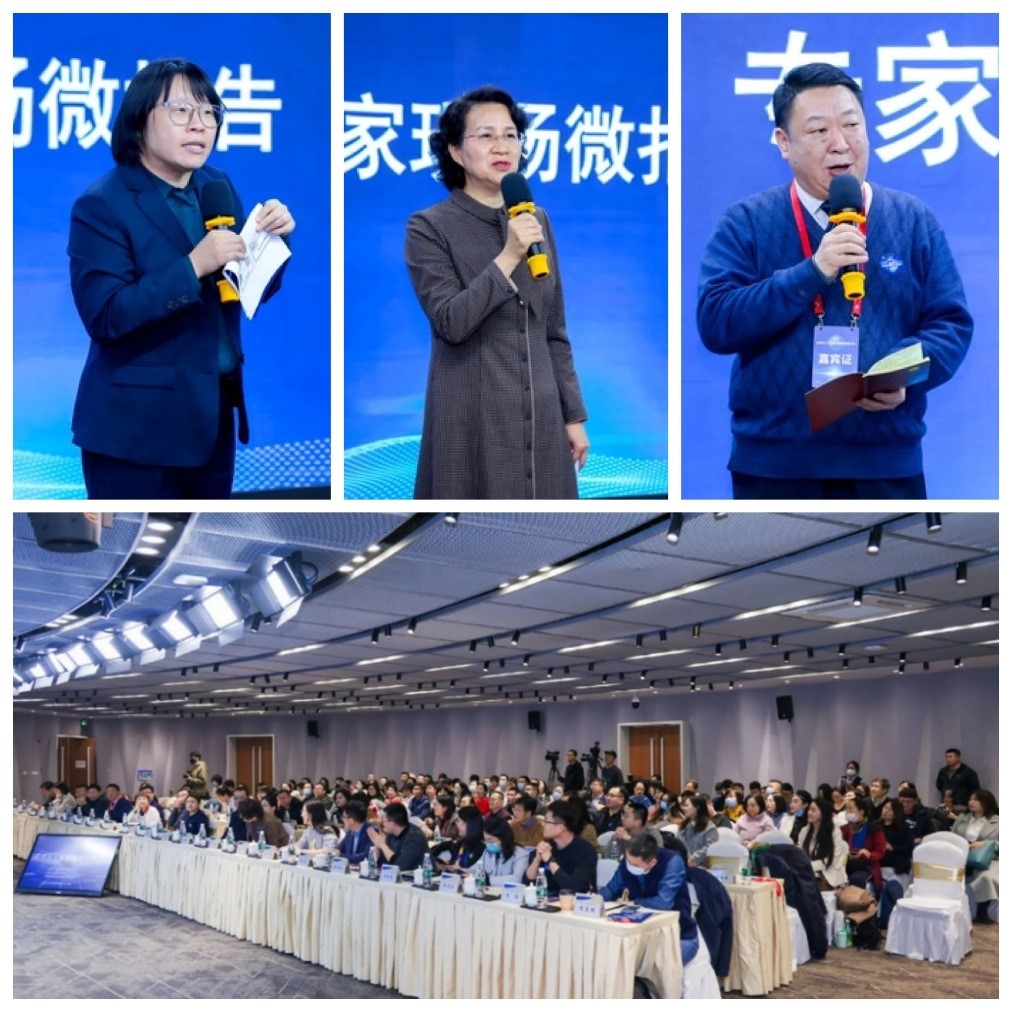On 8th December 2023, the Symposium on Education Transformation by Generative Artificial Intelligence was successfully held at Zhongguancun MOOC Times Building in Beijing. The symposium was hosted by the Institute of Digital Education, China National Academy of Educational Sciences (CNAES), co-organized by Z-MTB and China Education 30 Forum, and supported by iFLYTEK Co., Ltd. and Boya Cloud Classroom. More than 200 representatives from education administrative departments, universities, industry associations, research institutions, primary and secondary school leaders, and experts from municipalities, districts, and counties across the country attended.
New Insights: AI Spurs Education Revolution

Li Yongzhi, President of CNAES, pointed out that, throughout the human history, science has been promoting education revolutions. As a revolutionary technological innovation, the generative artificial intelligence has historical significance comparable to the steam engine, electricity, and the Internet, and will have a disruptive impact on the society. It already possesses the ability to understand multimodal information and engage in reasoning, exemplifying the features of “intelligence emergence”. This provides brand-new opportunities for addressing the diverse needs of human beings. However, the generative artificial intelligence is still based on probability reasoning, and there are still problems, such as knowledge illusion. Its strong generative capacity and data bias may impose unpredictable consequences on the higher-order reasoning of human beings and the social ethical system.
Li Yongzhi stressed that education is the area receiving the greatest impact of generative artificial intelligence, which will have profound influence on teacher-student relationship, teaching methods and teaching content, or even incur a major transformation of educational goals and educational development strategies. In response, artificial intelligence cognitive education should be carried out on an accelerated and organized basis. A “clean” pre-trained model for minors that are safe, non-profit, and controllable should be developed under the leadership of the government; in-depth research should be implemented; international frontiers should be followed; new staff force including principals and teachers should be cultivated; artificial intelligence education experiments should be encouraged; and new educational development tracks should be opened up and new advantages of education development should be explored via digitalization.
Liu Si, Professor at BHU, started her speech by examining the current state of different types of generative models, such as image, music, and language. She introduced the technological development process of large-scale artificial intelligence models and their potential in empowering education. She pointed out that large language models, with their ability to understand multimodal data and perform higher-order thinking, can effectively assist teachers and students in educational activities, serving as “learning advisors” and “teaching assistants” to achieve personalized learning and automated instruction. However, caution must be exercised when using artificial intelligence in educational settings to avoid misinformation, biases, and the risk of encouraging students’ intellectual laziness, misleading students and causing ideological issues.
Cao Peijie, Deputy Director of the Institute of Digital Education of CNAES, pointed out that the leaps and bounds of generative artificial intelligence transformed the ways human beings think, educate and obtain knowledge. We should actively use new technologies to bring out innovations in teaching, and provide talent support for building a leading country in education with the prioritized transformation of education. In response to the education revolution brought about by generative artificial intelligence, he proposed three solutions: first, teachers should be freed from repetitive labor by artificial intelligence and the efficiency of standardized education should be improved; second, artificial intelligence should be used as intelligent tutor and virtual learning pals, to generate learning resources and learning plans, and to upgrade standardized education to individualized education; third, artificial intelligence should become the basic technology of education, redefine education content and teaching procedures, and establish a new education mode that is different from that in the industrial times.
Lu Yu, Director of AI Lab at Advanced Innovation Center for Future Education at BNU, said that the contemporary multimodal education data and education domain knowledge jointly constitute the basis of generative artificial intelligence and pre-trained large models. Relevant educational large models are constructed from the data-driven and knowledge-driven perspectives. Such models can understand the objects of education, teaching resources, and teaching interaction processes. Ultimately, they aim to achieve intelligent assistance for teaching, automatic generation of teaching resources, and support for the formation of human-machine collaborative teaching processes. Of course, viewed from the current research and practical exploration, generative artificial intelligence still faces issues in educational applications, such as the “illusion” problem of the educational content generated and the risks related to intellectual property. The solution to these problems relies on continuous technological iteration and joint efforts of the whole society.
New Forms: Local Practices Boost Education Innovation
Xiong Qiuju, Director of the Education Bureau of Changning District in Shanghai, shared Changning’s experience in pursuing “vibrant education”, striving for students’ free and overall development, and cultivating innovative talents. Considering the digital literacy of teachers is the key to the deep integration of artificial intelligence and teaching, they launched district-wide teachers’ ICT 2.0 training, focusing on enhancing teachers’ digital literacy based on “low-code” development. In addition, they have taken the construction of regional AI courses and the organization of AI project competitions as starting points to promote the cultivation of innovative talents in the district, allowing students to immerse themselves in an exploratory learning environment, awakening students’ innovative consciousness and enhancing students’ innovation capabilities in human-machine interaction.
Du Rongzhen, Secretary of the Education Committee of Haidian District and director of the Haidian District Education Committee, said that in the new situation of educational innovation and development, Haidian District has been sticking to practical development, and exploring a path integrating generative artificial intelligence and education. They embrace scientific and technological developments with an open and inclusive attitude, promotes the application of new technologies and products in teaching with caution and rationality, strive to effectively help teachers and students reduce their workload and increase their efficiency with generative artificial intelligence and other new technologies. This effort aims to transform education and teaching, forming a path of education innovation and characteristic development.
New Scenarios: Technologies Reshape Education
Xie Yangbin, a research expert at Zhejiang Lab, pointed out that the fast development of large language model brings opportunities for education revolution, and provides new means for implementing the learner-centered education principle. The educational large models develop rapidly both in China and abroad, but the in-depth applications still face a series of challenges, for instance, limited output capacity, lack of application on core scenarios in the classroom, and restriction in monotonous task types, etc. The construction of educational large models is a process of continuous improvement by developers and users. It should take the actual needs of teachers and students as guidance, break data isolation, achieve technology integration, and form an innovation ecology that features co-building and sharing for educational large models.
Mei Ye, Founder of Boya Cloud Classroom, took the AI digitization classrooms as an example to introduce how they empowered education with technologies such as Unreal Engine and local inference, and how they solved problems like multimodality, computing power and ethics that exist in the application of generative artificial intelligence in education. She believes that AI classrooms can serve as smart learning pals and smart tutors, and help education administrative departments to finish the “last mile” of digital transformation. As an education technology company, they hope to effectively empower digital transformation with AI technologies, promote the normalized application of generative artificial intelligence, and contribute to education equity and quality improvement.

New Trend: Joint Efforts for the Future of Education
At the symposium, Cao Peijie and Huang Baozhong (Director of Intelligent Education Research Center at Zhejiang Lab) jointly released Reconstructing the Landscape of Education: Research Report on Educational LLMs. The report focuses on educational large models, discusses the technological foundations, application status, potential challenges, innovation plans, and application scenarios, with the goal of promoting the development of educational large models and further facilitating the educational innovation and development in the era of artificial intelligence.
At the symposium, Consensus on the Actions of Artificial Intelligence in Education Innovation was jointly launched by CNAES, Z-MTB, Haidian Institute of Education Sciences, Zhongguancun School District Management Center, Jilin Academy of Educational Sciences, College of Teacher Education in Jiulongpo District, Chongqing, Jiangnan Primary School of Nan’an District, Chongqing.

Wang Xuenan (Deputy Director of the Institute of Digital Education of CNAES), Jing Xiaoxia (Principal of Zhongguancun No.1 Primary School Education Group), Jiang Yuanbin (Vice President of College of Teacher Education in Jiulongpo District, Chongqing) gave on-site generative micro reports. Concensus was reached that the fast development of generative artificial intelligence is accelerating education reform, and we must actively adapt our ways of thinking, adopt excellent practical experiences, take the demands of actual teaching as guidance, and promote the in-depth integration of generative artificial intelligence in educational scenarios.

This symposium put forward guiding opinions on the educational reform of generative artificial intelligence from conceptual, technological and practical aspects. It is hoped that all parties, including enterprises, universities, research institutes and users, will work together to jointly embrace the future that features in-depth integration of education and technology.